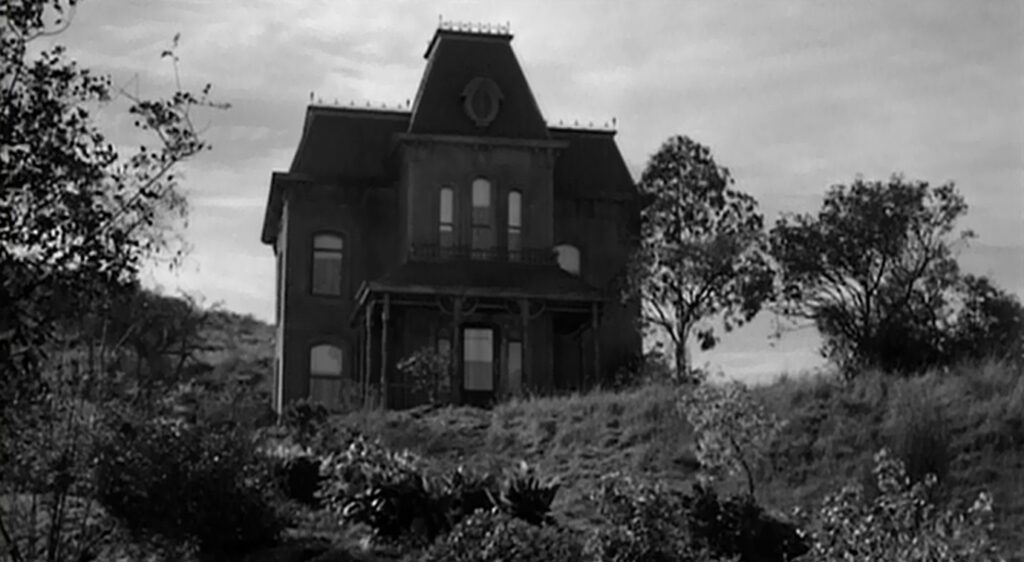
Psycho
1960, directed by Alfred Hitchcock
We can make a good guess as to Alfred Hitchcock’s state of mind when he went to make Psycho. Two years earlier he had made a movie about a man with a persistent Oedipus complex whose attachment to a young woman leads to her death. It was the summit of Hitchcock’s career, the most powerful expression of his lifelong belief in the corrupting influence of juvenile sexuality – yet it was roundly misunderstood and ignored. Lots of filmmakers find their work underappreciated, but for that to happen to a movie of Vertigo‘s caliber was something else. If people failed to see that Vertigo was about incest, Hitchcock had few good options. To tell them himself would be to admit he had failed, but no… the failure rightly belonged to the critics. Instead why not remake Vertigo in such a way that nobody could miss the oedipal sexuality?
In their basic framework Psycho and Vertigo are close. Both are studies of grown men who remain sexually possessive of their mothers. In both the female lead is disposed of in a shocking turn halfway through, and although she comes back in Vertigo, the male lead in both films causes her death. Both are preoccupied with the psychological crimes of the man, while a much lesser financially driven guilt puts the woman in his crosshairs. When Norman Bates retrieves Marion Crane’s naked body from the shower, having chastely avoided sexual contact, it recalls the way Scottie Ferguson had retrieved Madeleine from San Francisco Bay and changed her clothes with delicate propriety. The Second Empire architecture of the Bates house recalls the McKittrick Hotel in Vertigo. Additionally both movies follow the same opening pattern, going from a view of rooftops to an intimate interior to a ground-floor office to scenes of driving in a car.
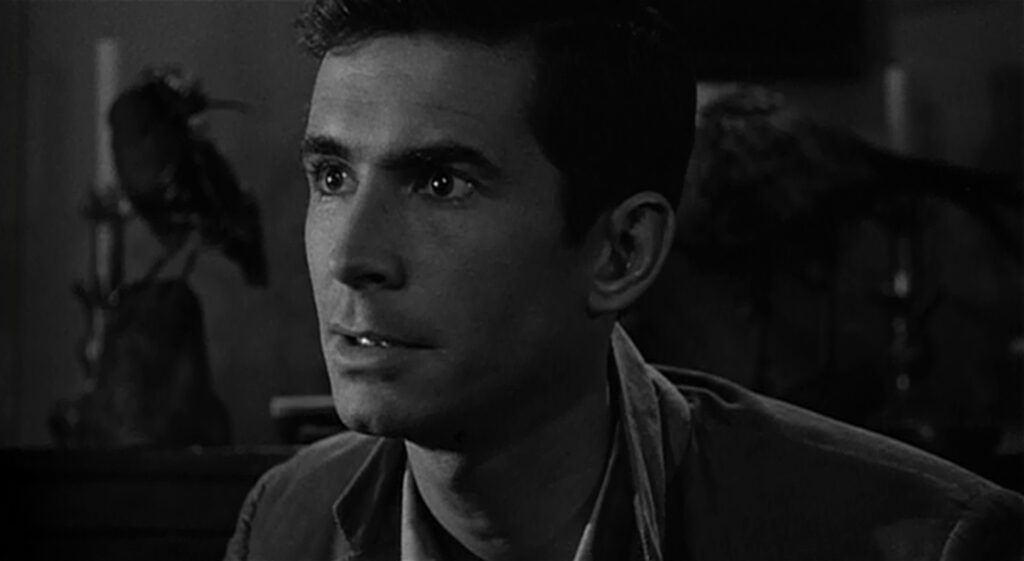
Hitchcock was doubtless impatient with the reception of Vertigo, but he was still too good of a filmmaker to make his intentions entirely obvious. Norman Bates is clearly the worst kind of mommy’s boy, but that disorder has to compete with the psychosis that results from killing his mother in a jealous rage. His detachment from reality gives the movie its title and occasions the psychiatrist’s lengthy explanation in the final scene, but we mustn’t lose sight of Hitchcock’s preoccupation with incest, which runs through his career. In Vertigo too the lesser malady had given the film its title. If Norman Bates’ psychosis were really the center of Psycho then we could write the movie off for sensationalizing mental illness, but in fact his psychosis is a MacGuffin. (The idea that Marion’s theft from her employer is the MacGuffin is itself a kind of MacGuffin, coyly steering us to a simpler description.) Psycho pretends to be about deviant psychopathology when it’s actually about something alarmingly common.
It’s surely not lost on everyone that the name “Norman” is close to the word “normal”, and Hitchcock knew that people would take it as ironic – but it’s not meant to be ironic at all. A psychotic may be abnormal, but in Freud’s thinking oedipal incest is an almost universal stage of development, and Hitchcock’s argument is that far too many grown men in our modern society fail to grow out of it. The most frightening thing about Psycho is not the shower scene or the dead body in the basement, but the idea that Norman Bates resembles so many living and breathing men.
Having lost his father in early childhood, Norman enjoyed several years of his mother’s exclusive attention until she remarried. Like Scottie Ferguson he has become a boy in a man’s body. His behavior is timid and nervous, but when he doesn’t get his way he becomes willful like a child having a tantrum. Unable to pursue a normal adult relationship, he spies on Marion undressing through a peephole. Instead of a real dinner he brings Marion children’s food – milk and sandwiches. When Lila inspects Norman’s bedroom, finding it filled with stuffed animals and toys, Norman’s most recent line should still resonate in our ears: “I had a very happy childhood. My mother and I were more than happy.”
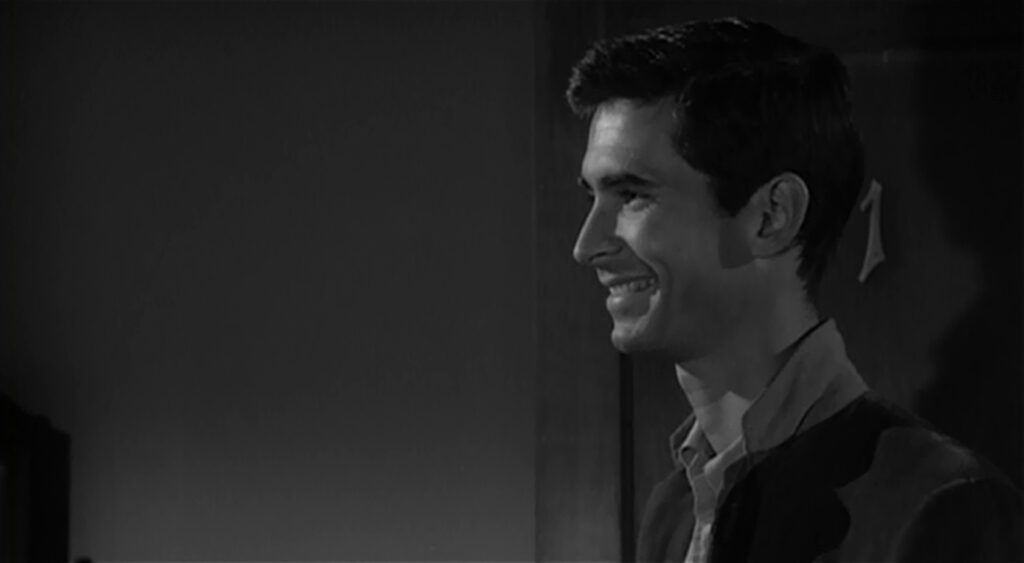
Lila also finds a phonograph record of Beethoven’s Eroica Symphony in Norman’s bedroom. Again Hitchcock surely knew that people would mistake its meaning. The word looks like “erotic”, but “eroica” is Italian for “heroic”, and that’s exactly what Hitchcock means. Like so many oedipal males Norman Bates wishes to view himself as his mother’s hero. When he stands in the doorway of Marion’s motel room, the number “1” is positioned right beside his head like a thought balloon over someone who imagines himself as “Mommy’s number one”. If we wish to draw lessons about the psychologically suspect prevalence of superhero narratives in our culture, Hitchcock would probably not have stood in our way.
Just as Scottie Ferguson had transfered his incestuous attraction onto a woman whose name starts with “Ma”, Norman Bates finds himself attracted to Marion Crane, whose pseudonym in the guest registry is Marie Samuels. Hitchcock loved to play with words and names, and he was known for his raunchy sense of humor, which reveals itself in the stuffed birds in the motel office. Norman says “My hobby is stuffing things.” In British English a “bird” is a young woman – his hobby is a surrogate for what he fantasizes, and later we find out that he has also stuffed his mother.
The paintings in Norman’s office point indirectly to parent-child incest, suggesting it through the age differences between Venus and Cupid or Susannah and the Elders. Likewise, when Cassidy flirts with Marion at her workplace in Phoenix, it’s not only their age difference that insinuates incest but also the way he leads into it by conflating Marion with his daughter.
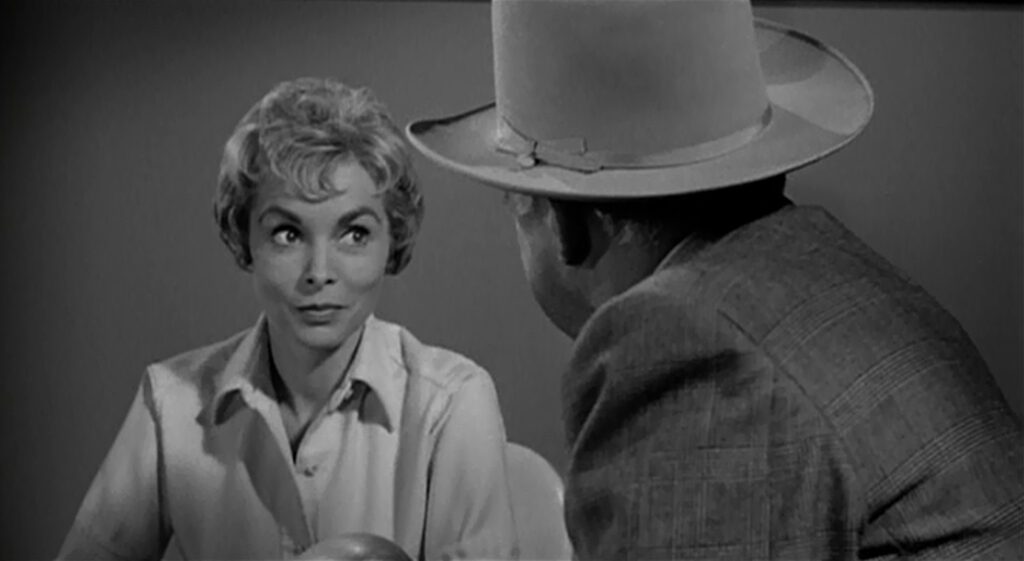
The psychological portrait of Norman Bates is materialized in the setting of the motel. Like Norman, the modern motel presents a functional front to the world, but looming in the background is a spooky old Victorian house. The house evokes the past, and for Norman that means his childhood when he had his mother to himself, an idealized Golden Age that dominates his present life and which he constantly retreats to.
For someone so obsessed with sex, Norman Bates seems awfully prudish when he shows Marion her cabin and won’t even utter the word “bathroom”. While the sexual pull of his mother is the dominant force in his personality, we must remember that it’s a childlike sexuality, and its primary object is to possess his mother. He’s interested in Marion’s body when she undresses, but when he catches her in the shower his chief impulse is violence. The dangers of juvenile sexuality in adults take many forms, but it generally manifests as a wish to own and control. Correspondingly, the rivalry with a father figure translates into intergenerational hatred. We don’t have to look far to find both of these tendencies in the real world, and Hitchcock appreciated how little we think about their causes.
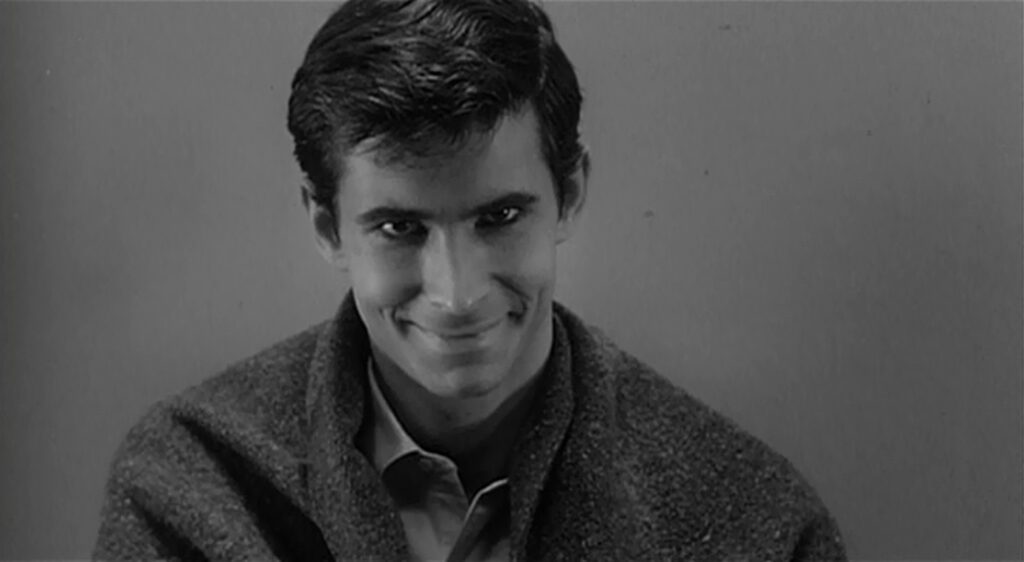
Psycho was certainly a step back for Hitchcock, and he doubtless realized that, although its commercial success must have compensated for his disappointments. In spite of all its parallels to Vertigo, and in spite of its more overt treatment of oedipal sexuality, critics still didn’t make the connection – Psycho did not help people to see Vertigo any more clearly. He also made a big compromise in characterizing Norman Bates as such a madman. After Strangers on a Train he had tried to cast the oedipal male as someone recognizable from everyday life, using Jimmy Stewart in Rear Window and Vertigo to make the point that juvenile incest does not make a man an outlier in our society… and that that’s the danger of it. We can’t avoid people like that because they’re too common. Calling the character “Norman” to remind us that he’s normal or ordinary only goes so far… he’s even more freakish than Bruno Antony from Strangers on a Train.
Hitchcock may have been right to feel frustrated with his audience after Vertigo, but it’s only natural that a movie made in frustration will fall short in communicating. Psycho was too overly dramatic to teach audiences what Hitchcock wanted them to see. People responded to the shock and horror, taking the psychology for granted as a kind of background. Still the movie should help us to put Vertigo in context. Insofar as Hitchcock gave up on his audience in making Psycho, we can see all the more how much respect he paid to his audience in Vertigo.
CONNECTIONS:
The Cabinet of Dr. Caligari – Main character goes insane through self-deception, maintains innocence of murder, views self as heroic; stabbing scene with incomplete view of murderer
Dead of Night – Split personality taken over by his stronger half
Sunset Boulevard – Psychosis gives the film a dramatic ending but is not the main subject
Strangers on a Train – Oedipal villain; line about the villain’s mother being unwell
Vertigo – Oedipal male as a threat to society; female lead disappears halfway through; villain retrieves woman from bay/shower; Second Empire house representing psychological past; opening scenes progress from rooftops to interior to a ground floor office to driving
Le beau Serge – Image or implication of a skull in the final shot
Blue Velvet – Villain is a dangerously infantile man sexually possessive of his mother
Dogville – Point from director’s earlier film amplified for clarity
The Counselor – Opening with panorama of southwestern American city leading into window where a couple is making love around 2 p.m.; story about a theft and the murder of a woman
Burning – Oedipal character who fantasizes being a hero to his mother